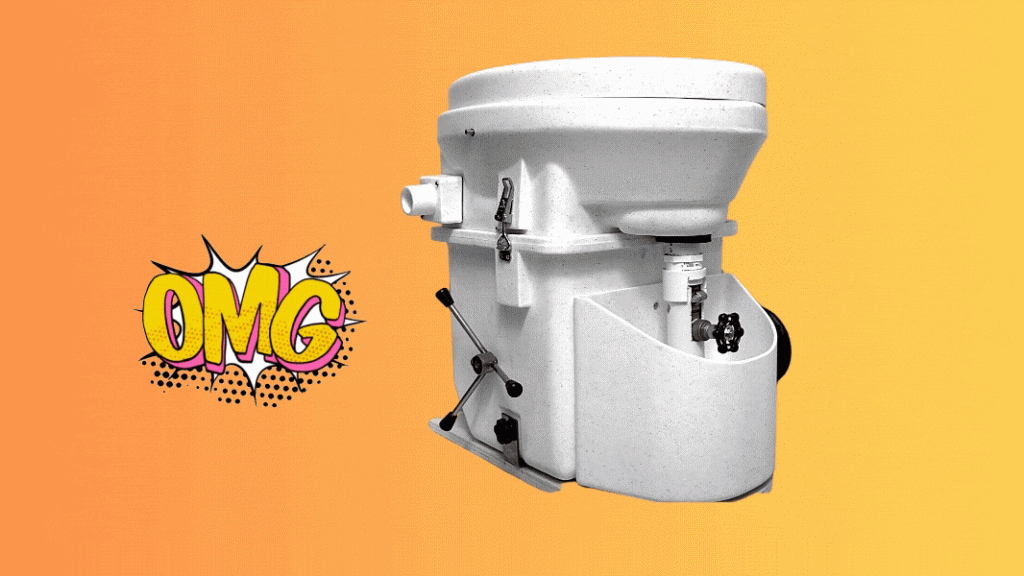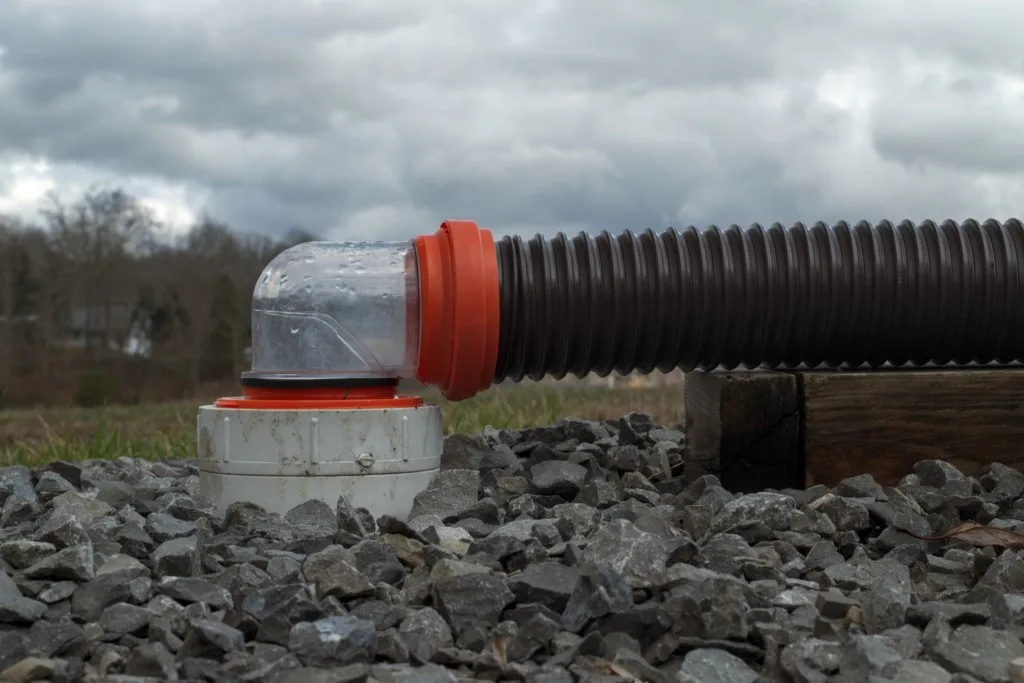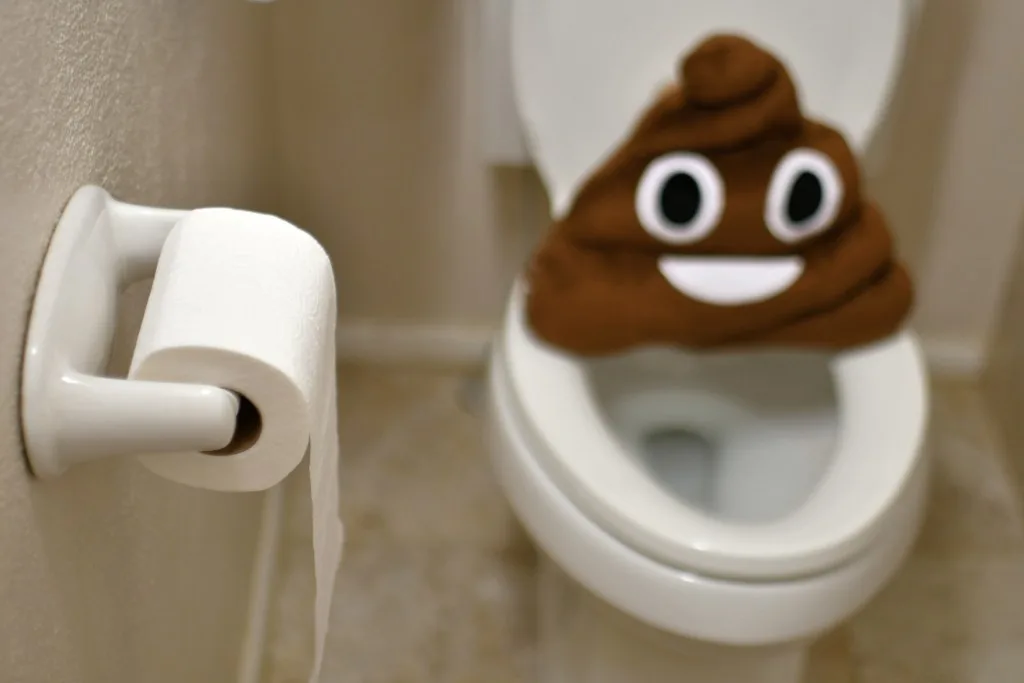Nobody wants to talk about poop and black tanks, but it’s almost as necessary as performing the dirty duty itself. And when it comes to RVing, the main conversation about poo consistently revolves around how to get rid of it.
Keep on reading for all the dirty details on how (and where) RVers get rid of their waste, including types of toilets and more about the infamous poop pyramid.
Let’s get started!
What Types of Toilets Are in RVs?
In a sticks-and-brick home, the majority of toilets are porcelain. In an RV, there are several types of toilets, each with the same goal of collecting human waste.
Based on the type of RV, though, there are different options to choose from. The three main types consist of the most common type, which is connected to a black tank, and two others that are self-contained.

RV Toilet Connected to a Black Tank
RV toilets are usually connected to a black tank, which is where sewage and other waste materials are stored. These tanks can vary in size depending on the size of the rig. When the toilet is flushed, the waste is discharged into the black tank, where the waste is stored until it can be discharged.
These toilets are typically made of plastic, but some are porcelain. Their flushing mechanisms are generally on the bottom of the toilet or the side. If on the bottom, when done doing your business, you step on the lever.
This opens up a passageway into the holding tank itself while at the same time letting water into the tank to help wash it all away. If it’s a side lever, you pull the lever, and the same occurs. All in all, it’s very similar to an everyday toilet.
Pro Tip: Is it ok to put bleach in your black tank?
Compost Toilet
The compost toilet is quite different. Composting toilets use a process of aerobic decomposition to break down human RVers’ poop into safe, soil-like compost. Since there’s no water involved, they’re perfect for RVs. Some even have a separate space for liquid waste versus solid waste.
Not only do they take up less space than a traditional RV toilet, but they also don’t require any hookups to sewer or septic systems. Plus, they’re environmentally friendly since they turn waste into a valuable resource. If you’re looking for an RV toilet that’s both efficient and eco-friendly, a composting toilet might just be the way to go.
REAL TALK: The truth about composting toilets.

Cassette Toilet
A cassette toilet is similar to a compost toilet in that it isn’t hooked up to a traditional black tank. This type of toilet is typically found in smaller RVs such as vans or other Class B’s. Unlike a traditional flush toilet, a cassette toilet doesn’t require a connection to a sewer or septic system.
Instead, it has its own holding tank under the seat that must be emptied periodically (usually more often than a black tank). Cassette toilets are also relatively easy to install and maintain, which makes them a popular choice for those who RV or camp regularly.
How Do You Get Rid of Human Waste in an RV?
Regardless of which type of RV toilet is used, they all still need to be emptied.
An RV toilet that is hooked up to a black tank needs to be emptied at an RV dump site. Once there, you’ll hook up a hose specifically meant to rid the black tank of any waste. This is also the time you would empty any other holding tanks, such as the gray water tank.
First, empty the black tank and then empty the gray water tank. The wastewater from the gray water tank helps to rinse the remnants of the black tank. Unhook the hose from the tanks and be sure to rinse it clean before disconnecting from the sewer. Close up the tanks, and they’re now ready to be filled once again.

Emptying a composting toilet takes fewer steps. If it’s the type that separates the liquid from the waste, you can empty the liquid into any flushable toilet. The solid waste can be placed into a compostable bag and discarded into any trash bin. Ideally, it’ll be a larger trash bin at an RV park and not a small bin at a gas station or near a grocery store.
Emptying a cassette toilet is similar to both of the other RV toilets. You can choose to hook up a sewer hose and empty the contents into an RV dump site. Or you can dump the entirety of the contents into any flushable toilet.
With all three styles of toilets, after you’ve dumped the contents, you’ll want to use an RV holding tank cleaning product to clean the tanks. RVs are small spaces, and keeping each space smelling fresh and clean is pertinent to everyone’s happiness, especially after emptying an RV toilet.
FYI: Can you dump your waste on the ground if you’re in the middle of nowhere?
How Do You Dump RV Waste After Boondocking?
Contrary to popular belief, you cannot dump RV wastewater – black or gray tanks – on the ground while boondocking. It’s illegal and can actually harm the environment. So, how do you dump the RV tank after boondocking?
You dump your tank after boondocking the same way you dump your tank when you’re camping and don’t have a sewer hookup at your site. This means finding an RV dumpsite nearby. Many truck stops have RV dumpsites, along with some state parks and interstate rest areas.
You can also generally use a campground’s RV dump site. Some towns even allow you to dump RV tanks at their wastewater management centers. Most places will charge a small fee, but that fee is worth it when your tanks are full and you’re still not done camping.

How Do RVs Deal With Poop Pyramid?
If you’re a new RVer, you may have never heard of a poop pyramid. And because you’re reading this, we hope you never have to deal with one. A poop pyramid is exactly what it sounds like. If you have an RV toilet that uses a black tank, pay attention.
We all love to have full hookups at RV parks. They make RV travel easy. You have electricity at the touch of a button. You have running water easily at your disposal. And you don’t have to worry about your black tank getting full because your sewer hose is hooked up and ready to go.
Therein lies the problem. A poop pyramid is when you have the black tank open all the time when camped at a site with a sewer hookup. When urine heads into the black tank after flushing and the tank is open, it keeps on going into the sewer. Sounds great, right? It’s not.
Because now, when the poop tries to head into the black tank after flushing, there’s no additional liquid to help wash it down, so it builds up just below the toilet line. Over time, when everyone has been using the toilet, the poop builds up into what is known in RV circles as the poop pyramid. This will eventually clog the toilet, creating a backup of human waste!
To avoid the RVer’s poop pyramid, don’t leave the black tank open. Even though you do have full hookups, you’ll still have to remember to empty your black tank on a regular basis.

How Often Should You Dump Your Black Tank?
Speaking of emptying black tanks, how often should that be done? In general, you should empty your black tank every three to five days or when they’re about three-quarters full. This prevents misreading black tank sensors and helps prevent backups due to full tanks because of this. This also goes a long way in preventing unnecessary and unwanted odors.
And while three to five days might be the general recommendation, if you have a small black tank, or many people using the black tank, you might want to consider dumping it more often than that.
Is It Hard to Dump RV Waste?
Dumping RV waste doesn’t have to be hard unless you make it that way. We’ve all seen the classic scene from the movie Christmas Vacation where Cousin Eddie is dumping his black tank in his bathrobe on a neighborhood street. If you want to be Cousin Eddie, then dumping RV waste can be hard, not to mention illegal and messy.
However, most of us don’t want to be like Cousin Eddie. So follow the advice given, and dumping your tank will be easier than having another RVers poop conversation.
Discover the Best Free Camping Across the USA
To be honest with you, we hate paying for camping. There are so many free campsites in America (with complete privacy).
You should give it a try!
As a matter of fact, these free campsites are yours. Every time you pay federal taxes, you’re contributing to these lands.
Become a FREE CAMPING INSIDER and join the 100,000 campers who love to score the best site!
We’ll send you the 50 Best Free Campsites in the USA (one per state). Access the list by submitting your email below: